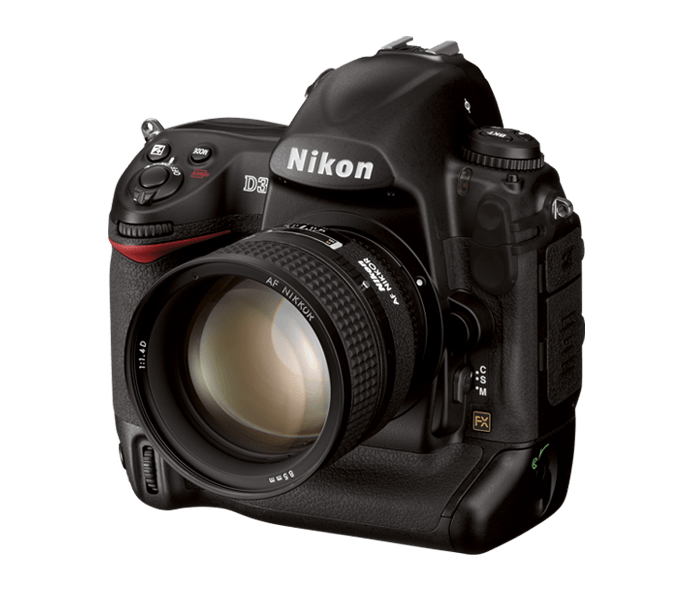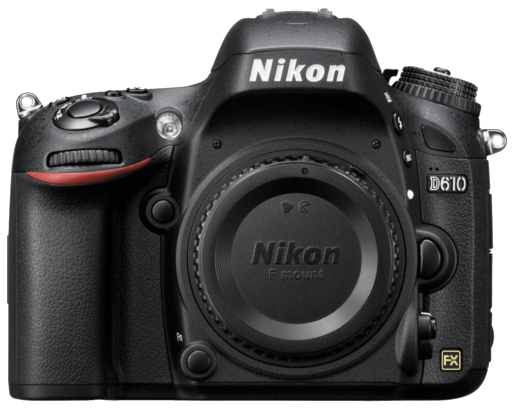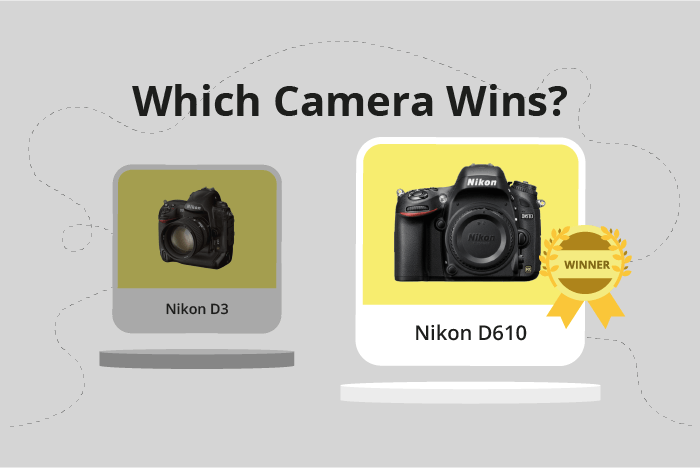Nikon D3 vs D610 Comparison
Nikon D3

Nikon D610

The Nikon D610 triumphs over the Nikon D3 with a score of 66/100, compared to the D3’s 58/100. Both cameras are DSLRs and share some similarities. However, the D610 has a few advantages. Released in 2013, it is six years newer than the D3, which was launched in 2007. Additionally, the D610 is significantly lighter, weighing 850g (1.87lbs) compared to the D3’s 1300g (2.87lbs). This makes it more portable and easier to handle.
The Nikon D3 has its own merits, though. Despite being an older model, it was initially priced at $4300, indicating a higher-end market compared to the D610’s $1999 launch price. This suggests that the D3 may offer some features or build quality that the D610 lacks.
Taking everything into account, the Nikon D610 is the winner due to its higher score, lighter weight, and more recent release. However, the Nikon D3 may still appeal to those who value a higher-end camera with potential additional features.
Nikon D3 vs D610 Overview and Optics
The Nikon D610 outperforms the Nikon D3 in optics with a score of 70/100 compared to the D3’s 56/100. Both cameras share some common specifications, such as the CMOS sensor type, full-frame sensor size, Nikon F FX lens mount, and lack of image stabilization.
The Nikon D610’s superior optics can be attributed to its higher megapixel count of 24, compared to the D3’s 12.1 megapixels. This allows the D610 to capture more detail and produce higher resolution images. Additionally, the D610 has a more advanced Expeed 3 processor, which contributes to better image processing and improved performance. The D610 also boasts a higher DXOMARK score of 94 for its sensor, indicating better overall image quality.
On the other hand, the Nikon D3 has a faster shooting speed of 11 frames per second, compared to the D610’s 6 frames per second. This makes the D3 more suitable for action photography and capturing fast-moving subjects.
In terms of optics, the Nikon D610 comes out as the better camera due to its higher resolution, improved processor, and better sensor performance. However, the Nikon D3 has an advantage in shooting speed, making it a more suitable choice for photographers who prioritize capturing fast-paced action. Ultimately, the choice between these two cameras will depend on the specific needs and priorities of the photographer.
Nikon D3 vs D610 Video Performance
When comparing the Nikon D3 and the Nikon D610 in terms of video capabilities, it is important to note that the Nikon D3 does not have any video functionality. This means that if you are looking for a camera with video capabilities, the Nikon D3 will not meet your needs.
On the other hand, the Nikon D610 has a video score of 57/100. This camera offers Full HD video resolution, with maximum dimensions of 1920 x 1080. The maximum video frame rate is 30fps, which allows for smooth and clear video recording. Additionally, the Nikon D610 is equipped with built-in time-lapse functionality, providing creative options for capturing and presenting your video content.
Considering the video capabilities of both cameras, it is clear that the Nikon D610 is the better choice for those who require video functionality in their camera. The Nikon D3, lacking video features, may not be suitable for users who need video recording capabilities. Therefore, when selecting between these two cameras, it is essential to consider whether video functionality is a priority or not.
Nikon D3 vs D610 Features and Benefits
The Nikon D610 outperforms the Nikon D3 with a feature score of 57 out of 100, compared to the D3’s 54 points. Both cameras share several specifications, including a 3-inch screen size, screen resolutions of 922,000 and 921,000 dots respectively, and the absence of a touchscreen, flip screen, GPS, and Bluetooth capabilities.
The Nikon D610 excels over the D3 in certain aspects. The most notable advantage is the presence of built-in WIFI, allowing for easier and faster transfer of images to other devices and remote control of the camera. Additionally, the D610 has a slightly larger screen size of 3.2 inches, providing a marginally better user experience when reviewing images and navigating menus.
Despite scoring lower overall, the Nikon D3 still has some advantages over the D610. The D3’s screen resolution is slightly higher at 922,000 dots compared to the D610’s 921,000 dots. This difference, although minimal, results in a marginally sharper display on the D3.
Taking into account these differences, the Nikon D610 emerges as the superior camera in terms of features, primarily due to its built-in WIFI and larger screen size. However, the Nikon D3’s marginally higher screen resolution is a point worth considering for those who prioritize display sharpness. Ultimately, the choice between these two cameras depends on the individual’s preferences and specific needs.
Nikon D3 vs D610 Storage and Battery
The Nikon D3 surpasses the Nikon D610 in storage and battery with a score of 87/100, a 16-point difference from the D610’s 71/100. Both cameras share two memory card slots, but the D3 accepts Compact Flash (Type I or II) while the D610 takes SD, SDHC, and SDXC cards. Neither camera has USB charging.
The D3 excels in battery life, providing 4300 shots with its EN-EL4a battery, significantly more than the D610’s 900 shots using an EN-EL15 battery. This advantage allows the D3 to last longer during photo sessions without needing a battery replacement.
On the other hand, the D610’s compatibility with SD, SDHC, and SDXC cards might be more convenient for some users, as these memory cards are more common and versatile than Compact Flash cards.
Taking these points into consideration, the Nikon D3’s superior battery life makes it a stronger option in terms of storage and battery performance. The Nikon D610, while slightly disadvantaged in battery life, offers more accessible memory card options.
Nikon D3 vs D610 – Our Verdict
Are you still undecided about which camera is right for you? Have a look at these popular comparisons that feature the Nikon D3 or the Nikon D610:

